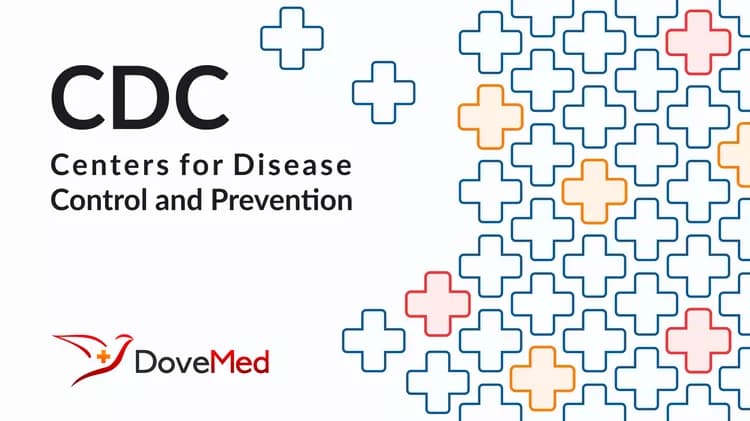
CDC Study Finds Seat Belt Use Up to 85 Percent Nationally
CDC Study Finds Seat Belt Use Up to 85 Percent Nationally
Still, 1 in 7 adults do not wear a seat belt on every trip
Almost 6 out of 7 U.S. drivers surveyed report that they always wear a seat belt when driving or riding in a motor vehicle, according to a study released today by the Centers for Disease Control and Prevention. Seat belt use has become the national norm in most states, though rates of self-reported seat belt use vary widely from state to state, with a high of 94 percent (Oregon) and a low of 59 percent (North Dakota).
Still, every 14 seconds, an adult in the United States is treated in an emergency department for crash-related injuries.
"A simple step that most drivers and passengers in the United States already take—buckling their seat belts—cuts in half the chance of being seriously injured or killed in a crash," said CDC Director Thomas R. Frieden, MD, MPH. "Yet, about 1 in 7 adults do not wear a seat belt on every trip. If everyone in the vehicle buckled up every time, we could further reduce one of the leading causes of death."
The study was in Vital Signs, a section of CDC's Morbidity and Mortality Weekly Report (MMWR).
The study found that states with primary seat belt enforcement laws, where police officers can pull cars over and issue tickets solely because drivers and passengers are unbelted, have higher rates of seat belt use than states with secondary enforcement laws, which only allow officers to issue tickets to drivers who have been pulled over for violating another law. States with primary enforcement laws had an overall seat belt use rate of 88 percent, whereas states with secondary enforcement laws had an overall seat belt use rate of 79 percent. The national average for seat belt use is 85 percent.
If the secondary law states had achieved 88 percent belt use in 2008, it would have resulted in an additional 7.3 million adults buckling up.
Though 1 in 3 U.S. adults lived in states with secondary enforcement laws in 2008, residents of these states accounted for 49 percent of the unbelted drivers and passengers on U.S. roads. Nineteen states do not have primary enforcement seat belt laws.
"As seatbelt use increases and more states pass primary enforcement laws, we are seeing crash-related injuries decline," said Linda Degutis, Dr. PH, MSN, director of CDC's Injury Center. "This indicates that primary enforcement laws, paired with vigorous enforcement programs, get more people to wear seat belts. We know that buckling up can make a life-saving difference."
For the study, CDC researchers analyzed two national sources: 2009 National Electronic Injury Surveillance System-All Injury Program data on non-fatal injuries treated in emergency departments nationwide and 2008 Behavioral Risk Factor Surveillance System data on self-reported risk behaviors.
To help increase seat belt use and protect more people on the road, CDC supports:
Primary enforcement seat belt laws that cover all drivers and passengers of appropriate age and size, regardless of whether they are sitting in the front or back seat of the vehicle.
According to previous research by CDC and others, everyone is encouraged to take the following steps:
Use a seat belt on every trip, no matter how short.
Encourage everyone in the car to buckle up, including those in the back seat.
Make sure children are properly buckled up in a seat belt, booster seat, or car seat, whichever is age- and size-appropriate.
Have all children ages 12 and under sit in the back seat.
CDC is also releasing "Policy Impact: Seat Belts," one in a series of briefs highlighting key public health issues, and important science-based policy actions that can be taken to address them. Through this new publication, CDC supports state-based efforts to strengthen seat belt policies and prevent crash-related injuries and deaths. (www.cdc.gov/motorvehiclesafety/seatbeltbrief)
CDC's Injury Center works to protect the safety of everyone on the roads, every day. For more information about seat belts and motor vehicle safety, please visit www.cdc.gov/motorvehiclesafety and www.cdc.gov/vitalsigns.
About Vital Signs
CDC Vital Signs is a new report that appears on the first Tuesday of the month as part of the CDC journal Morbidity and Mortality Weekly Report (MMWR). Vital Signs is designed to provide the latest data and information on key health indicators – cancer prevention, obesity, tobacco use, alcohol use, access to health care, cardiovascular health, HIV/AIDS, motor vehicle safety, health care-associated infections, teen pregnancy, asthma and food safety.
###
U.S. DEPARTMENT OF HEALTH AND HUMAN SERVICES
Related Articles
Test Your Knowledge
Asked by users
Related Centers
Related Specialties
Related Physicians
Related Procedures
Related Resources
Join DoveHubs
and connect with fellow professionals

0 Comments
Please log in to post a comment.